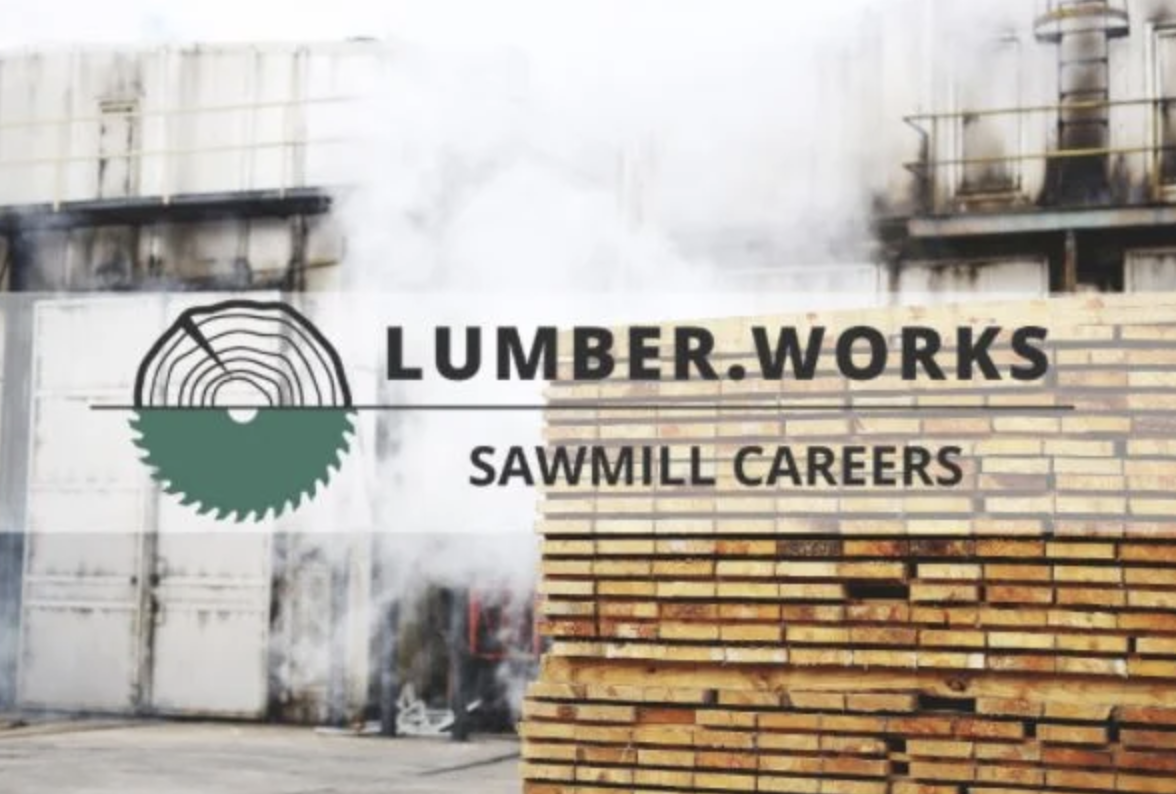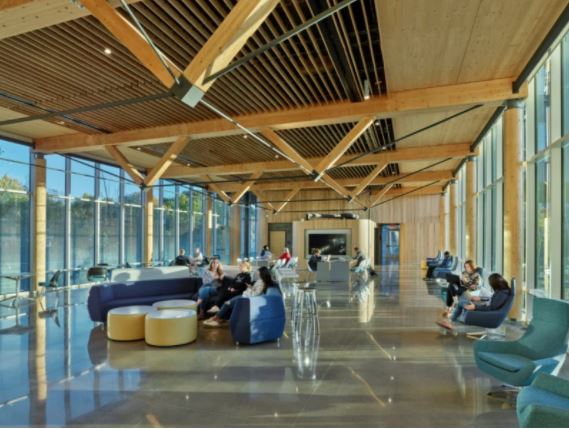HIGHLIGHTS
PROGRAM UPDATES
New Fire Design Specification Available AWC’s Mass Timber Proposals Advance in 2024 ICC Hearings Think Wood-Sponsored Webinar Highlights Low-Carbon Design and Operations in Multifamily Housing WoodWorks Testifies to Educate U.S. Senate Committee on Wood Buildings’ Linkages to Climate Change MitigationINDUSTRY NEWS
Metropolis Panel Weighs Mass Timber’s Potential Impact on Design, Construction, and Sustainability Seattle to Welcome First Mass Timber Modular Housing Project Experienced Mass Timber Architect Shares Insights on Latest Trends and Innovations The State of Mass Timber in Canada 2021 Report Now Available Taller Podiums Offer New Economies of Scale for Multifamily Builders Experts Stress Reducing Embodied Carbon at ULI Spring Meeting WoodWorks’ McLain Featured Expert in MarketScale Interview 80-Acre Google-Led Project Moves Forward in San Jose Can Welding Replace Glue in Mass Timber Manufacturing? Swedish Forest Industries Report Asserts Timber Harvesting is Climate SmartINSIGHTS ON THE COMPETITION
From Major Polluter to Beneficial Carbon Sink?: New Technologies May Reset Concrete’s Relationship With CarbonProgram Updates
New Fire Design Specification Available
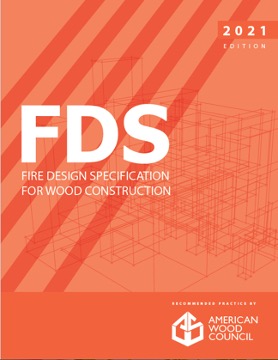
The American Wood Council (AWC) recently put out the 2021 Fire Design Specification for Wood Construction (FDS), a new, comprehensive publication to support the code-compliant fire design of wood members, assemblies, and connections. Available as a free download on the AWC website, the FDS contains existing NDS® provisions for the structural design of unprotected wood members exposed to standardized ASTM E119 fire exposure. It also provides details on how to determine the added fire resistance and thermal benefits created by using additional wood cover, gypsum panel products, and insulation. The additional calculation provisions give standardized methods of calculating thermal separation and burn-through requirements as required in ASTM E119 and as offered in the AWC’s Technical Report 10: Calculating the Fire Resistance of Exposed and Protected Wood Members (TR10).
Download and share a copy of the 2021 FDS today.
AWC’s Mass Timber Proposals Advance in 2024 ICC Hearings
A proposal supported by the AWC to increase the allowable area of exposed mass timber ceilings from 20% to 100% in buildings up to 12 stories was recommended for approval during recent International Code Council (ICC) 2024 Group A Code Development Hearings. The proposal is underpinned by compelling evidence generated through testing conducted by the Research Institute of Sweden (RISE) and sponsored by the AWC through a Wood Innovations Grant.
An additional AWC-sponsored change to delay the installation of noncombustible toppings on cross laminated timber (CLT) floors during construction was also recommended for approval. In addition to the AWC, two experienced mass timber builders, Jeff Morrow and Hans-Erik Blomgren, testified in support of this change, each citing its cost-saving benefits.
The final round of hearings on these proposals and associated public comments will be held in September in Pittsburgh. Proposal voting will be held in person and online.
Think Wood-Sponsored Webinar Highlights Low-Carbon Design and Operations in Multifamily Housing
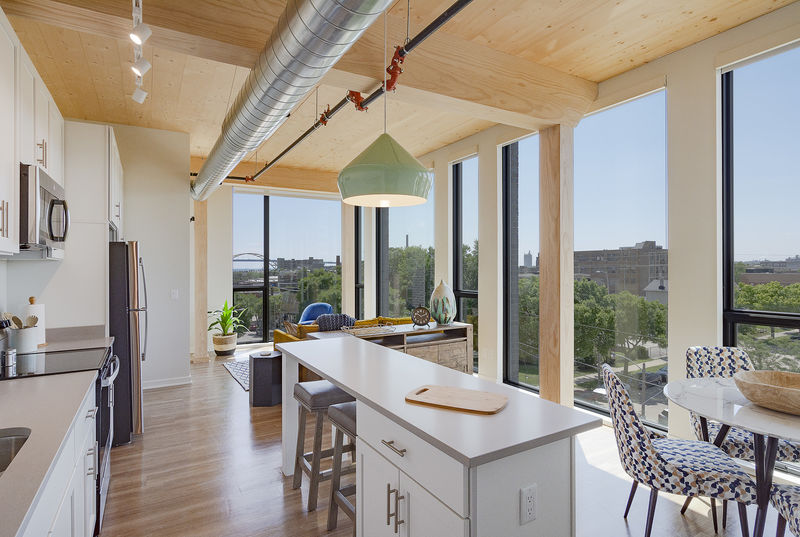
Think Wood continues to respond to industry interest in decarbonizing the built environment, most recently through a May 18 webinar with media partner Multi-Housing News, titled “Boost Efficiency, Reduce Your Carbon Footprint: Green Innovations in Multifamily.” The webinar focused on ways that multifamily building owners, operators, and architects are reducing carbon in building design and operations to attract sustainability-minded residents.
On the panel were Sara Lebastchi, VP of Operations at D&S Development; Marta Schantz, SVP at the Urban Land Institute; and Tim Wolosz, Principal at Engberg Anderson Architects.

Carbon emissions reduction, including through the use of mass timber; smart technology; and healthy buildings emerged as key trends in the conversation, as did strategies for operational efficiency. Panelists also discussed the market conditions driving sustainability in all sectors of real estate, such as local and state policies and building code changes.
Two project examples were shared to illustrate these trends: 1430Q in Sacramento and Timber Lofts in Milwaukee. 1430Q, which received technical assistance from WoodWorks, is the United States’ first residential structure featuring six stories of light wood-frame construction over a two-story concrete podium. Timber Lofts is an adaptive reuse building, in which the owner elected “to use CLT (cross laminated timber) for the floors along with reuse of a 130-year-old, five-story timber and masonry building,” to achieve sustainability goals.
The webinar had 304 registrations and remains available on demand. A targeted follow-up email was sent to attendees linking to a Think Wood-sponsored white paper, ESG Provides Tailwind for Mass Timber Buildings.
WoodWorks Testifies to Educate U.S. Senate Committee on Wood Buildings’ Linkages to Climate Change Mitigation
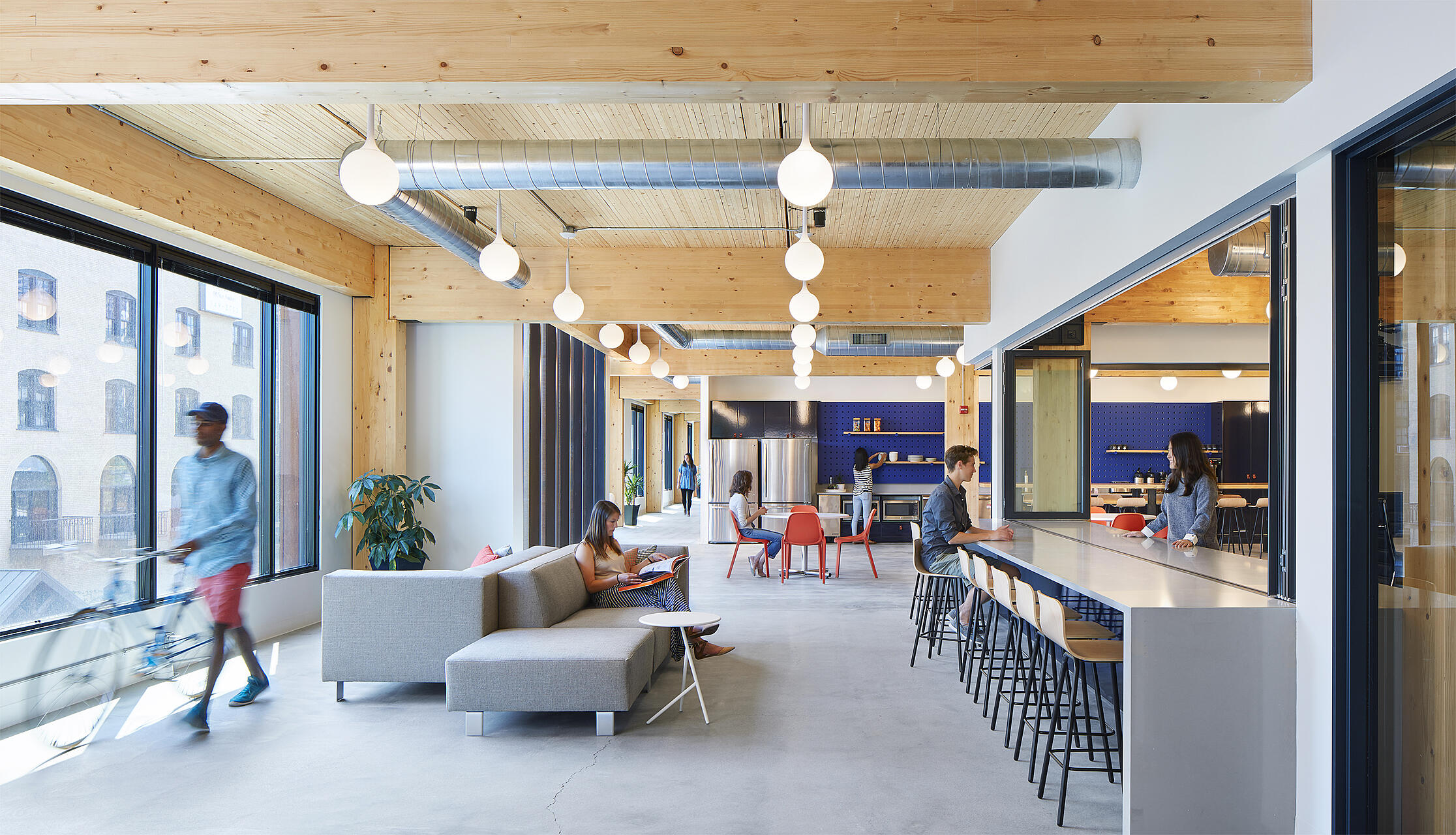
T3 Minneapolis, Perkins+Will, Photo Credit: Corey Gaffer
WoodWorks’ President and CEO Jennifer Cover recently testified before the U.S. Senate Committee on Energy and Natural Resources on why it is in the public interest to support the growth of mass timber markets as a specific climate-mitigation tool. This is the second time that the Senate has invited WoodWorks to share its expertise on the subject.
According to Cover’s testimony, “There are 17,000 buildings built in the country every year that could be built with wood solutions but are currently not. In most instances, it costs about the same to build with wood, yet the environmental benefits are significant and the only key hurdle is awareness and understanding. Building with innovative wood products from properly managed, sustainable forests is a relatively easy way to alleviate a sizable percentage of U.S. carbon emissions.”
Cover also highlighted the nimbleness of WoodWorks’ program in meeting the quickly evolving needs of the mass timber market. She also reiterated the availability of WoodWorks’ project support at no cost to design and construction teams.
Industry News
Metropolis Panel Weighs Mass Timber’s Potential Impact on Design, Construction, and Sustainability
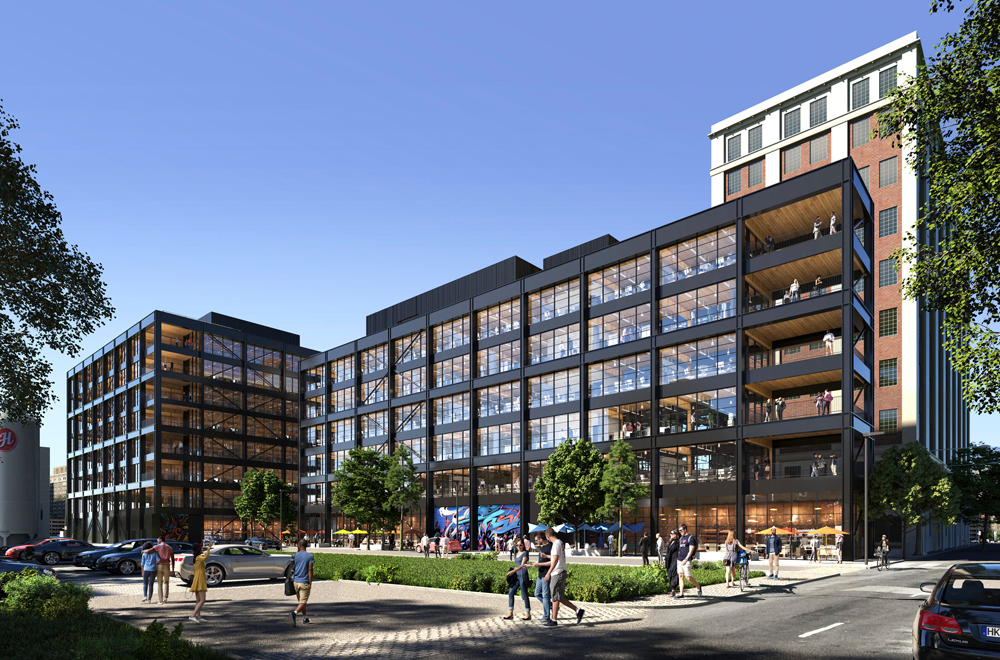
Metropolis Think Tank recently convened experts for its “Working with Timber – New Possibilities for Design, Construction, and Sustainability” webinar, hosted by DLR Group and featuring its principal, Steve Cavanaugh; Jacob Mans, professor, University of Minnesota; John Carmichael, builder, New South Construction; and Pete Kobelt, mass timber manufacturer and fabricator, Element5. The panel discussion covered a wide range of issues, including mass timber’s sustainability advantages, forest management, aesthetic and biophilic benefits, innovations in timber construction, and the increasingly enabling environment created by education and policy advancements.
Read more about the panel here.
Seattle to Welcome First Mass Timber Modular Housing Projec
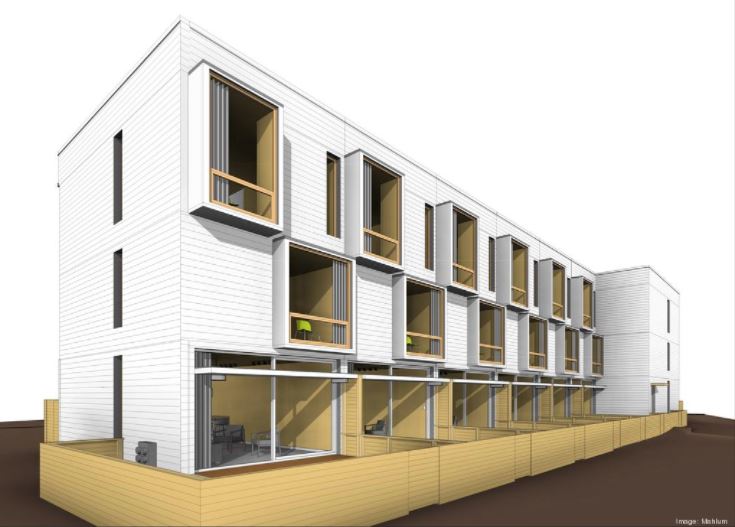
Seattle-based Green Canopy recently announced that it will develop a seven-unit, 7,950-square-foot mass timber modular townhouse project, a first in the city of Seattle. The project, which will use CLT panels from Alberta-based manufacturer ROC Modular, is scheduled to be built in 2022.
The project is among several new mass timber developments occurring in Puget Sound, along with a 46,000-square-foot mass timber office park being developed by LMN Architects in Kirkland; a Bill Gates-backed project in Kirkland; and the creation of the Darrington Wood Innovation Center in Snohomish County, which will produce CLT.
Read more about these developments here.
The State of Mass Timber in Canada 2021 Report Now Available
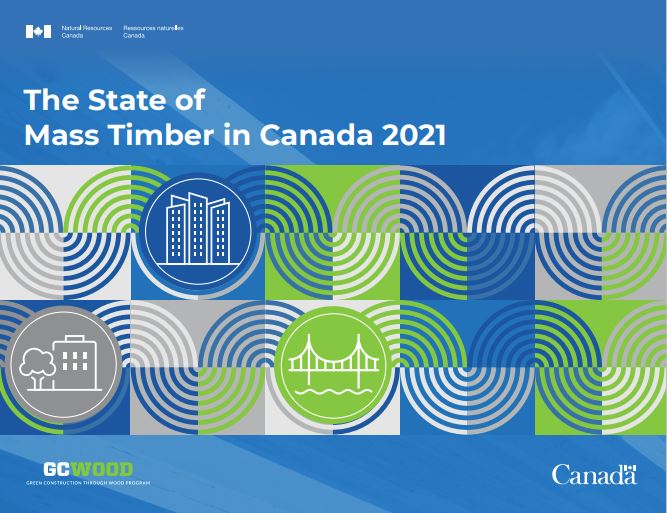
In late May, the Green Construction through Wood (GCWood) program released the inaugural edition of The State of Mass Timber in Canada 2021 (SMTC), a first-of-its-kind report providing insights into market trends in Canada’s mass timber sector. In addition to its data and analysis, the report highlights Canada’s mass timber production capacity, several domestic mass timber building projects, and mass timber’s role in a successful bioeconomy.
GCWood also published an interactive map to complement the SMTC report. The map provides information and location details on nearly 500 mass timber projects and 21 manufacturing facilities, and users are invited to submit additional project and manufacturing sites as they come online.
Read more about the SMTC here.
Taller Podiums Offer New Economies of Scale for Multifamily Builders
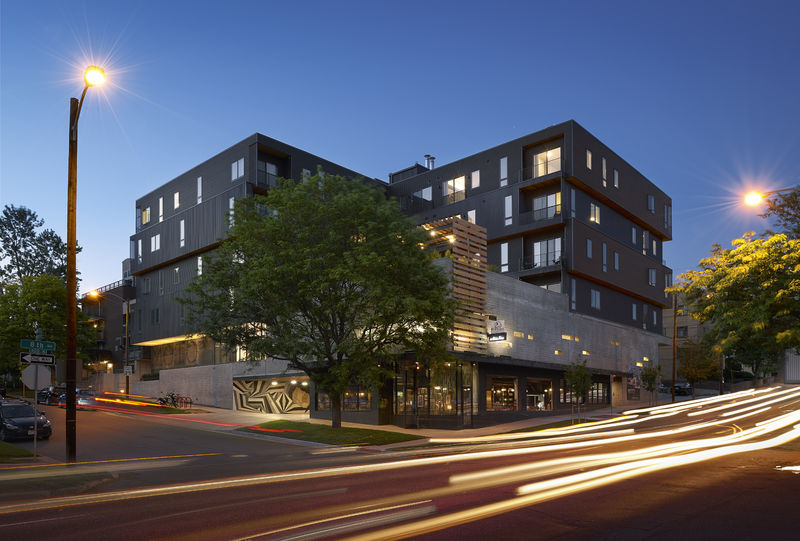
In a recent piece in Multi-Housing News, Joe Alcock of McMillan Pazdan Smith stresses how a change in the 2018 International Building Code (IBC) permits greater flexibility in podium construction in multifamily building projects. Specifically, the IBC change allows for taller podium construction, which means multiple stories of wood construction can be built on top of a multistory concrete or steel (or combination) structure. Taller podiums can in turn help designers and builders maximize their use of space, particularly in urban areas, while also reducing the overall cost of construction.
To date, the code change has been adopted in 12 states and two territories.
Read more about the benefits of this code change to the softwood lumber industry here.
Experts Stress Reducing Embodied Carbon at ULI Spring Meeting
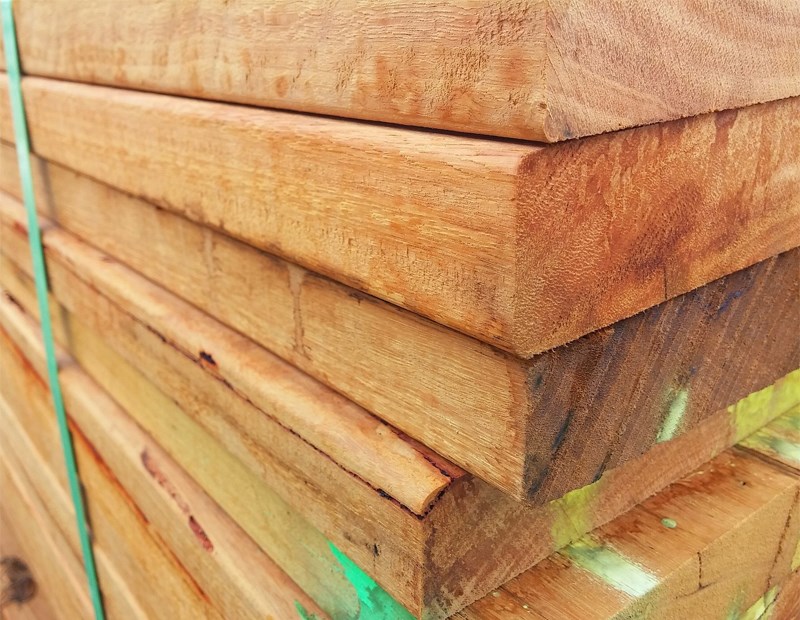
At the recent “The Future of Building Materials: Embodied Carbon and Why It Matters” panel discussion during the Urban Land Institute’s Virtual Spring Meeting, sustainability experts detailed strategies for reducing emissions from building construction, including by incorporating cost-efficient alternative materials such as mass timber.
The experts agreed that building owners are increasingly keen to reduce their embodied carbon footprints and, along with designers, are carefully considering where and how they source their materials as a means to lower their footprints. In addition to alternative materials, the experts also noted the need to reduce waste throughout all stages of construction, which is consistent with the benefits touted by prefabrication.
Read more about the panel discussion here.
WoodWorks’ McLain Featured Expert in MarketScale Interview
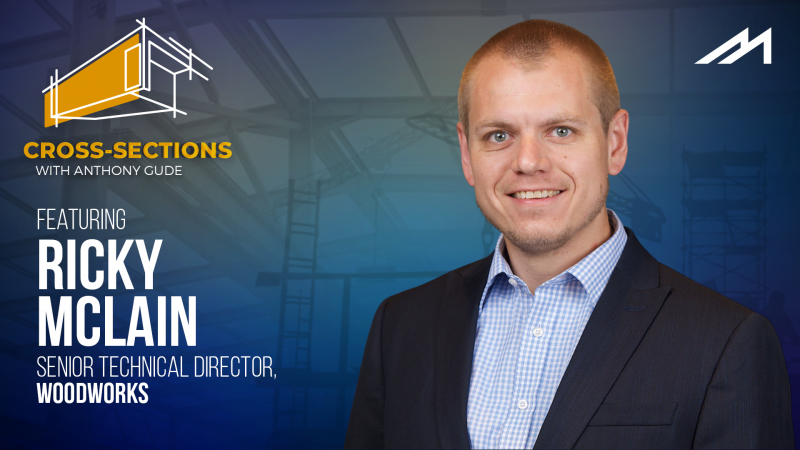
On a recent episode of MarketScale’s Cross-Sections program, host Anthony Gude spoke with WoodWorks’ Ricky McLain, PE, SE, Senior Technical Director of Tall Wood, about the program’s role in providing expert, project-specific support and education to the building design and construction industry, and the trends and opportunities WoodWorks is observing in industrialized construction, mass timber, and tall buildings. A trained structural engineer and WoodWorks’ in-house tall wood expert, McLain is particularly well versed on architectural, fire, and life safety and structural design topics related to mass timber and its rapid rise across the United States.
Click to watch McLain’s interview here.
80-Acre Google-Led Project Moves Forward in San Jose
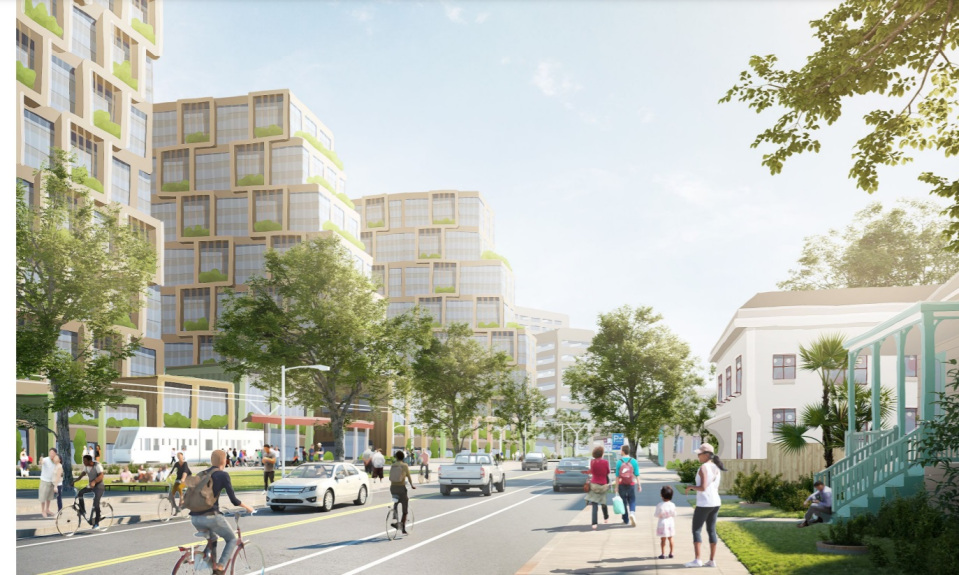
The San Jose City Council has unanimously approved Google’s master plan to transform 80 acres on the edge of downtown into Downtown West, a new transit- and sustainability-oriented neighborhood, replete with housing, commercial, and recreational spaces and structures.
The project is the largest economic development deal ever made in San Jose, and it is expected to bring up to 25,000 jobs to the city. Infrastructure construction is expected to begin in 2022, with building construction following in 2023. Per the deal, Google will provide $200 million in community benefits and construct at least 1,000 affordable housing units, which will amount to approximately one-quarter of all housing units constructed.
Google recently opted for mass timber construction for a similar, albeit much smaller, sustainability-oriented project in Sunnyvale, California.
Read more about the San Jose development here.
Can Welding Replace Glue in Mass Timber Manufacturing?
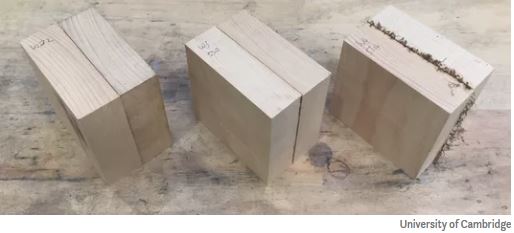
Researchers from the University of Cambridge’s Construction Innovation Lab and TWI Ltd., an association of welding industries, have successfully joined timber elements using linear friction welding. This innovation could open the door for producing mass timber without a bonding agent, such as the layer of polyurethane glue that is commonly used in CLT manufacturing.
TWI started applying friction welding to wood in 2019 after using it with other materials. The researchers claim that “the process has many potential benefits, including environmental factors as the joining doesn’t require the addition of any other materials to the wood.”
Read more about this innovation here.
Swedish Forest Industries Report Asserts Timber Harvesting is Climate Smart

A new report from the Swedish Forest Industries Federation rebuts the suggestion that harvesting wood leads to a “carbon debt,” which takes decades to pay off via new trees. Instead, its analysis found that no forest carbon debt accrues, even in the short term, if and as forests are managed to increase both standing volume and wood supply and as forest products themselves displace large quantities of fossil fuel emissions associated with other materials and manufacturing processes.
A robust forest bioeconomy is central to the equation, as when in place concurrently, sustainably managed forests and efficient wood products value chains are unique in being able to offer substantial and immediate climate benefits—as well as important co-benefits in the form of jobs and financial returns—in the forest-based sector.
Access a report summary and findings here.
Insights on the Competition
From Major Polluter to Beneficial Carbon Sink?: New Technologies May Reset Concrete’s Relationship With Carbon
A new post from Sasha Stashwick, a senior advocate with NRDC’s Climate & Clean Energy Program, theorizes that concrete could one day become a carbon sink with the introduction and widespread integration of new and emerging carbon-capturing technologies.
Stashwick notes that full decarbonization of cement will require advanced technologies, such as carbon capture utilization and storage (CCUS), in addition to improving production processes. Stashwick cites a recent report by Carbon 180, an environmental NGO on a mission to fundamentally rethink carbon, in asserting concrete’s potential for serving as a sink via technologies that can capture, use, and store CO2 permanently. According to Carbon 180, “At scale, these solutions can one day lead to carbon negative concrete, the point at which more emissions are captured and stored in the material than are generated in its production and use.”
Read more about concrete’s potential to store carbon here.
Industry Resources
FEA’s Housing Dashboard
View the May Dashboard
Virginia Tech's Monthly Housing Report
This monthly housing commentary report is a free service of Virginia Tech and is intended to help one gauge future business activity in the U.S. housing market.
April 2021 Reports (released in June 2021)
Part A: April Housing Commentary
Part B: April Economic Conditions


